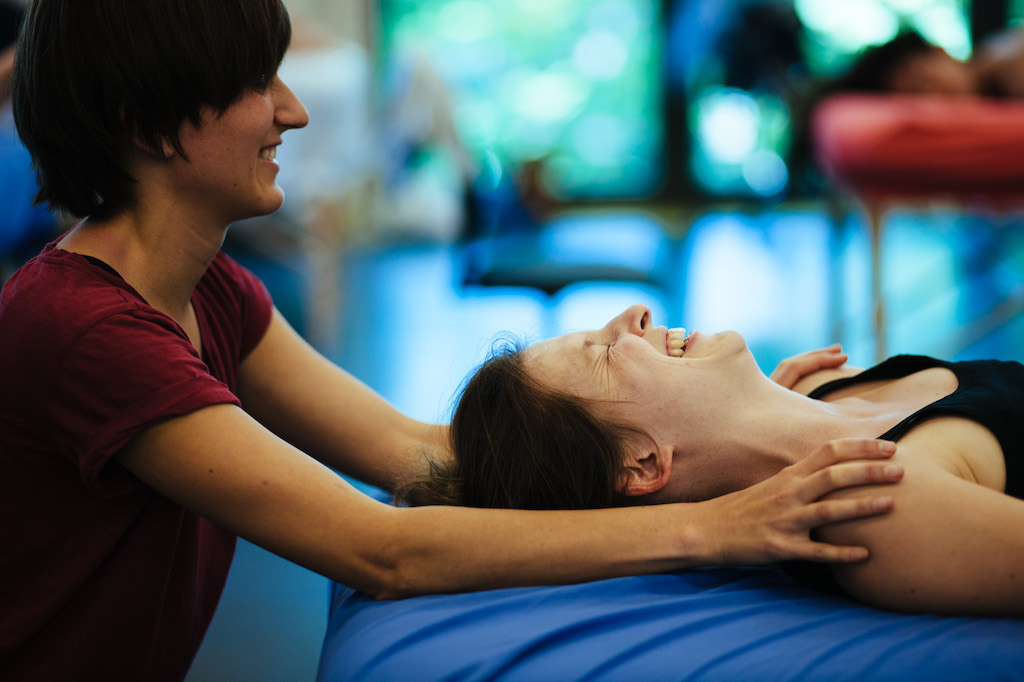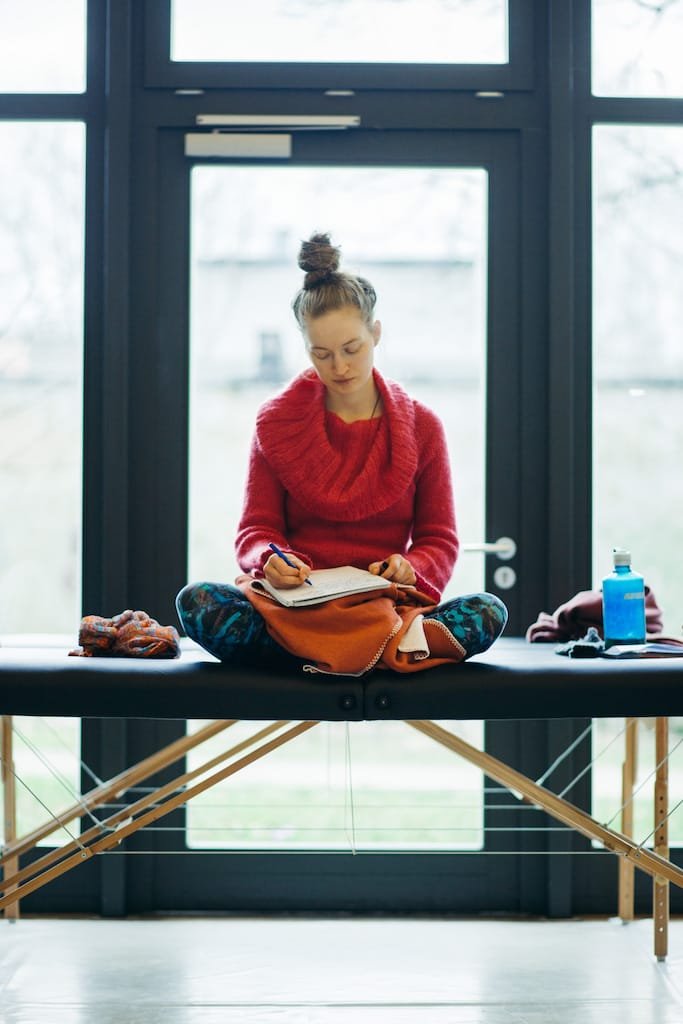
Work Table Is an Integral Part of the Pantarei Session
One of the furniture pieces needed in any work room of a Pantarei practitioner is a work table. It looks like a massage table, and that’s probably what people call it in the shop, and it is an integral part of the space of any work room designed to give sessions.
Should you buy ready-made, or purpose-built?
If you already have a work room in which sessions will take place, it might be worth having a work table purpose-built especially for you and that space. The price might be a bit higher for a custom-made table, but it will be built exactly to your specifications and needs, and it’s likely it will be with you for many years to come.
If you decide on a custom-made table, all that is written in this post is still relevant to you, but in addition you have to make sure that it is truly stable. Inspect it carefully to be sure that even after a thousand sessions, it will still be strong and not start to creak anytime the person on the table moves. The ideal is to have it built by a carpenter who comes highly recommended and is local to you. That way they can come to check it as needed and strengthen it once in a while as it ages.
Size does matter
When it comes to a work table, size is the one thing that matters quite a lot. You want your work table to be good for different clients – tall as well as short, wide as well as thin. The primary things to consider are length, width and height.
The length should be enough that a tall client can still lie on the table quite comfortably without their feet hanging off the end. If you’re not targeting basketball players as your main clients, you should be okay with a 1.8 meter table or even better – a 2 meter long table. Most massage tables that are sold in shops tend to be shorter than that, so be attentive to those measurements.
The width of the table is also important as again – you want your clients to not only be able to lie on their back comfortably, but also to allow their hands to rest slightly away from their body when by their side, still finding a place to rest on the table. It’s also important the table width is a size that allows you to comfortably stand at the side of the table to touch the client as required. In general, 75 to 80 cm is a good size to accommodate for this.
The height of the table is an important consideration, to ensure that it stands at a functional height for you, and does not encourage a bad working posture by being too low. One of the ways to estimate your ideal table height is to stand at the side of the table, make a fist with your hand, raise the shoulder of the same arm up towards your ear and your ideal height is around the level of their knuckles.
Another way to estimate is simply have a friend or a client volunteer to lie on the table, then measure how much height you need to allow you to reach their lower back when you stand at the top or the sides of the table.
One final important thing to remember about the height of your table is that unless you are in a very privileged situation, you will probably be sharing the table with other practitioners. So you should either find a mid-range height that is an average of everybody who will use it, or invest a little extra into an adjustable table that each practitioner can set to their own requirements. There is also the possibility to get a table custom made for your needs, then use stabilized lifts under the legs for taller practitioners, or a portable thick mattress that raises the patient up as needed.
The perfect table will most probably be more expensive, so decide what is most important to you regarding the table and then decide what is possible for you within your budget.

When leg room really counts
If you buy a custom-made table, ask the person that creates it for you to build the legs in such a way that you have room to move when seated at it, behind the head of your client. If you buy a ready-made table, try it out by sitting at it first and noticing where the bars, wires and supportive mechanisms sit with relation to your legs. If your leg room is restricted in any way, it will affect your ability to concentrate and be fully engaged with your client. You need to be able to move freely and safely as a practitioner.
How much load can the table carry?
Your table should be stable but also very strong. Don’t think only of the weight of your client – remember that sometimes you might also have to climb onto the work table yourself to touch in a stronger or more specific way. Also, sometimes clients might make movements that require solid unwavering support – from you as well as the table!
Its weight and portability
If you are going to be carrying your table around from place to place, you need to think about the weight and portability of your table as well. Consider how easy it is to open and fold away, how securely it fits together when set up and how easy it is to carry, based on your personal build and physical strength. Check that the carrying handle is comfortable in your hand and securely attached. If you have a permanent work space, this probably won’t be of any concern, unless you have to pack the table up on occasion when the room is to be used for other purposes.

Test the mattress
Nobody will be spending the night on the table, however it’s important to make sure the mattress is neither too hard, nor too soft. You don’t want your client to feel as if they are sinking into the table, or that it’s time to go to sleep as soon as they lie down, but at the same time you don’t want them to suffer because the mattress is too hard beneath them. If it’s possible, physically try the mattress before you buy it – lie down on it and notice how it feels under your body, press down into it with the heel of your hand and see how much resistance there is, or imagine if somebody touched you and pushed down on you, how that would feel.
The true value of professional equipment
The price you commit to depends on your location, the materials the table is made from, and the quality of the workmanship in the custom or ready-made table you bought. Bear in mind that if being a practitioner is your long-term career plan, then it’s worth investing in high quality professional tools such as this, together with a good chair. They might be the biggest investments in your practice that you make, but if chosen well, they will serve you beautifully for many years to come.
Solutions for early career practitioners
In case your budget doesn’t yet allow you to buy what you would like, or you are not yet completely confident if this is the profession for you for the long term, there are some other options. You can find your own creative ways to make a work table for the short term. It’s always possible to find a long table and add a mattress to it, or find a way to build a cheap variation of a table that is sturdy and stable. You may find a perfectly suitable second-hand table online, or you could look out for massage equipment clearance stock, or damaged floor stock for example that might just have a small stain or tear on it, but is still functionally good.
Throughout our more than 20 years of practice we have had many tables – some stayed with us for many years, even if this was simply a result of our own improvisation. Choose thoughtfully and choose well and you shouldn’t go wrong!
You are welcome to add more comments, ideas, recommendations in the comments below so we can all benefit from our collective experiences.



Merle Bennett
November 21, 2018 at 11:19 pmHi, thanks for this!
I bought a great working table second Hand a couple of weeks ago and I am very happy with it. In the place I worked before there is an osteopaths table with a hole for client’s heads, which I anf my clients liked. Now I don’t have this hole anymore and I Think about supporting the Upper body of my clients with a blanket or a pillow. Does any of you have other hints of how to make it more confortable2for clients to ly on their fronts? Best, merle
Vered Manasse
November 24, 2018 at 12:56 pmHi Merle, I usually have no problem with clients having their head turn to one side. However is they have any kind of pain in doing so, the easiest answer is to ask them how would it be more comfortable for them – with a pillow or maybe by changing the position of their arm or legs…
Tablefacts.com
February 15, 2020 at 6:56 amExcellent. Absolutely loved reading and very helpful at the same time 🙂
Pantarei Office
February 19, 2020 at 8:30 amthank you. wonderful to know.